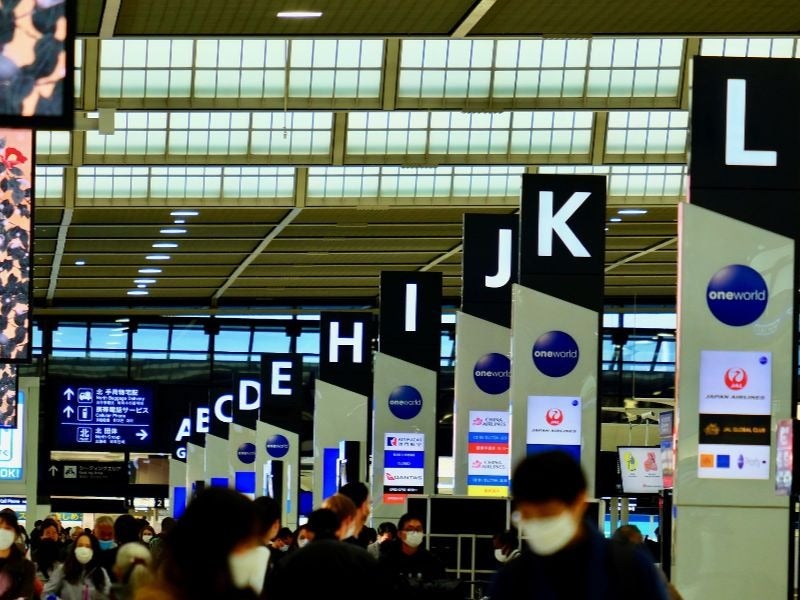
Coronavirus Impact on Aviation: Grounded Flights, Plummeting Revenue
The coronavirus pandemic is currently wreaking havoc across the global aviation industry. The likes of American Airlines and Virgin Atlantic have started deploying their passenger aircraft to carry cargo, while easyJet recently announced plans to ground its entire fleet and British Airways suspended all flights departing from its base at Gatwick Airport.
Despite huge uncertainty, in the next decade stakeholders should expect traffic to decrease and more investment to go into digital and technological advancements. This is what Paul Cuatrecasas, CEO of investment banking firm Aquaa Partners and author of Go Tech or Go Extinct, believes will be an outcome of the ongoing outbreak.

Discover B2B Marketing That Performs
Combine business intelligence and editorial excellence to reach engaged professionals across 36 leading media platforms.
In a media briefing held last week, Cuatrecasas explained how the current health crisis might spur investment in different segments of robotics and drone technology. These changes were all meant to happen even before the spread of the pandemic, but will now accelerate, forcing all industries to rethink their ecosystems and shift towards a stronger adoption of new technologies.
Impact of coronavirus on aviation: the fall of commercial travel
Airport operators and their stakeholders are already working to modify their operations in order to accommodate a fall in demand and largely reduced traffic. “Delta Airlines now has 13 US airports that are cargo-enabled for their passenger jets going to 70 destinations,” Cuatrecasas said last week. “This is becoming economically interesting for them because of the recent drop in jet fuel prices and the fact you only need two pilots. So this is a brand new dynamic for the industry that will have an impact on its ecosystem and it is potentially going to ease some of the pain with airliners.”
The move is emblematic of the industry’s resilience, but proving only partially effective for operators and their suppliers, as share prices continue to decrease as a result of the crisis.
In the long term, Cuatrecasas believes this prolonged disruption will have a number of consequences. “The first one is that we’ll have less flying, apart potentially from cargo,” he said.

US Tariffs are shifting - will you react or anticipate?
Don’t let policy changes catch you off guard. Stay proactive with real-time data and expert analysis.
By GlobalData“Certainly in terms of people, we’ll have less flying because we’re all going to become more accustomed to doing video conferences and virtual summits through zoom or through other means.” This will further be enabled by the rollout of 5G, which will allow faster connections as well as enhancements to the meeting experience through virtual reality, holograms and haptic technology.
Changes in cargo operations
Reduced passenger traffic may mean stakeholders could set aside more funds for the development of drones and autonomous vehicles to better serve its whole ecosystem.
The sector is already well accustomed to using them. Canada’s Edmonton International Airport, for example, is now using drones for deliveries to remote areas, as well as to carry out airport inspections and for bird control. Looking ahead, these practices may soon become the normality as Cuatrecasas explained: “I think we’ll see the number one obstacle – being regulatory authorities like the Federal Aviation Administration – easing some of their restrictions because the technology is there.”
As drone use increases, he said, so will the introduction of autonomous vehicles to replace trucks, vans and fleets: “These new types of vehicles we’ll see adapted for passengers, for cargo… they won’t have the steering wheel and they will be a revolution in the next five years.”
As far as autonomy goes, Cautrecasas concluded, the coming decade will welcome new and a larger number of software and hardware robots, as well as flying taxis and electric aircraft in the longer term.
The rise of hyperloop as an alternative to flying
From production to delivery, Cuatrecasas said that more changes will take place across the whole supply chain. While 3D printing and in-lab food culture will become the norm from producers’ perspective, increased competition with other freight transport methods should be expected on the deliverers’ end.
“Hyperloop will unfold in the next ten years,” explained Cuatrecasas. “There are today several Hyperloop companies in the development and these are well-financed. It’s probably inevitable, not imminent, but inevitable that we will see Hyperloop over the next ten years replacing a lot of the traffic we would typically see in traditional commercial and cargo airlines through Hyperloop.”
As he concluded his briefing, Cuatrecasas finally identified globalisation as the one aspect that probably won’t disappear in the next decade. “Because of COVID-19, there’s a lot of discussions that we will be more insular, and we won’t be travelling as much because of this kind of fear [of disease transmission],” he said.
“I don’t believe in that at all. I think we absolutely will have that in the short term over the next year, year and a half. But then we’ll have a further explosion of globalisation. We’ll all be much more prepared for pandemics and other shocks like this extreme disruption.”





